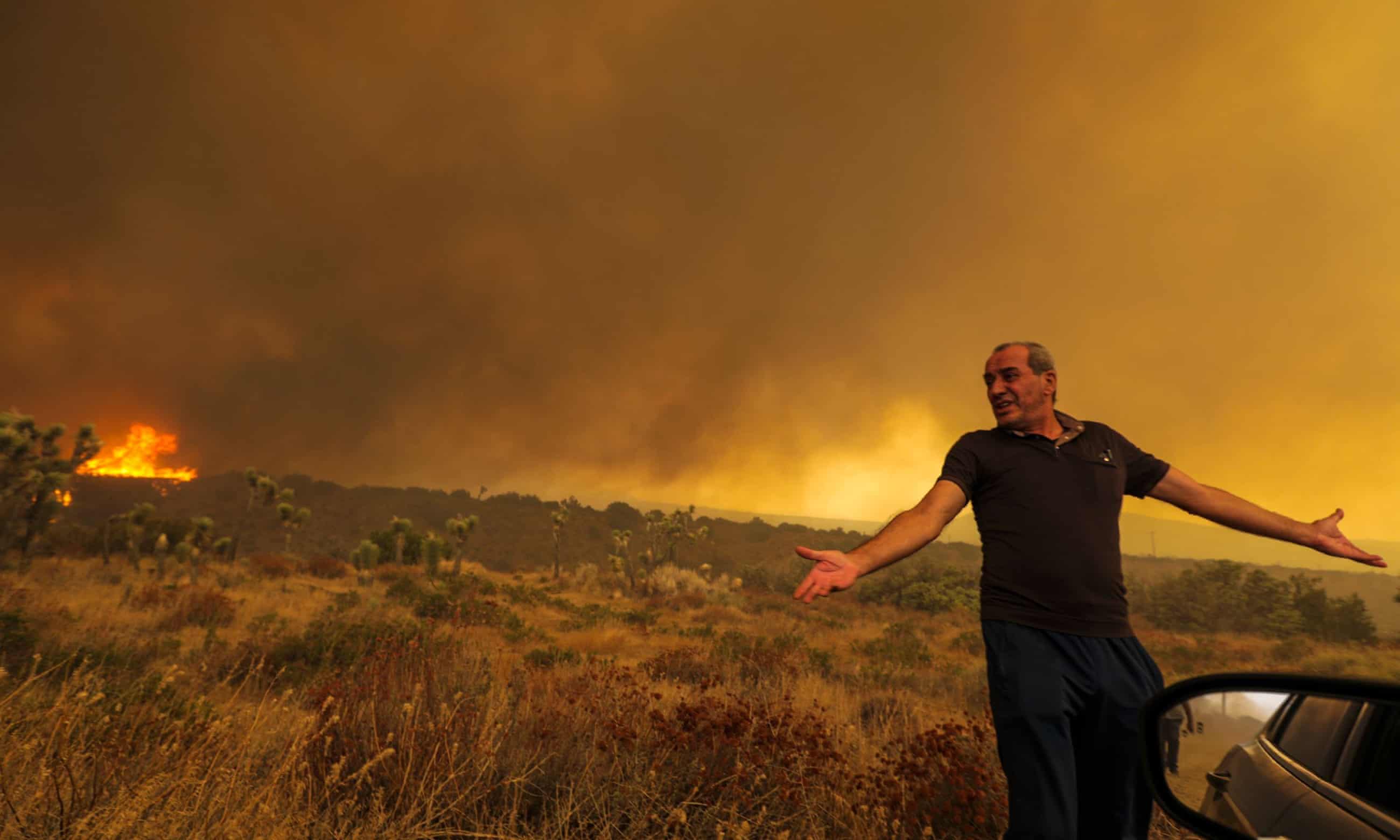- Support the Guardian's journalism, including our groundbreaking environment coverage, by making a contribution today.

"I want crystal clean water and air."
That's what Donald Trump said in the first chaotic presidential debate with Joe Biden. But there is scant evidence of that desire in the actions of his administration, which has spent nearly four years systematically dismantling core environmental protections, some of which stretch back decades.
Experts agree that the climate crisis's most destructive manifestations, on display in a particularly difficult year for the US, barely scratch the surface of the catastrophes to come. Yet the president appears unmoved by the enormous wildfires, devastating hurricanes, widespread water problems and persistent air pollution that disproportionately blights black and Latino communities. His administration has scrapped climate regulations, rolled back clean water rules and loosened pollution standards. Protections for public land and threatened species have been shrunk while new oil pipelines and coal mining have been encouraged.
The legacy of these changes will stretch well beyond Trump’s presidency. Here is a list of some of the key rollbacks of the Trump era.
PM2.5 are tiny particles, mainly from fossil fuel combustion in cars and power plants, that are linked to increased hospitalizations, emergency department visits and deaths.

Pollen and mold
PM2.5
Width of human hair
Studies suggest long-term exposure is associated with chronic bronchitis, reduced lung function and increased death rates from lung cancer and heart disease. Communities of color and low-income populations face disproportionate exposure to PM2.5. Research has shown that tightening the PM2.5 standard would save 12,000 American lives each year.
This fine particulate pollution decreased under Barack Obama, but has seen a steady uptick since Trump took office.
How PM2.5 levels changed since 2016
+25% compared to 2016
+20%
PM2.5 level started
increasing after 2016
+15%
+10%
+5%
No difference from 2016
2008
2010
2012
2014
2016
2018
Guardian graphic. Source: US Environmental Protection Agency and “Recent increases in air pollution: evidence and implications for mortality,” by Karen Clay and Nicholas Z. Muller

Pollen and mold
PM2.5
Width of human hair
Studies suggest long-term exposure is associated with chronic bronchitis, reduced lung function and increased death rates from lung cancer and heart disease. Communities of color and low-income populations face disproportionate exposure to PM2.5. Research has shown that tightening the PM2.5 standard would save 12,000 American lives each year.
This fine particulate pollution decreased under Barack Obama, but has seen a steady uptick since Trump took office.
How PM2.5 levels changed since 2016
+25% compared to 2016
+20%
+15%
PM2.5 level started
increasing after 2016
+10%
+5%
No difference from 2016
2008
2010
2012
2014
2016
2018
Guardian graphic. Source: US Environmental Protection Agency and “Recent
increases in air pollution: evidence and implications for mortality,” by Karen Clay and
Nicholas Z. Muller
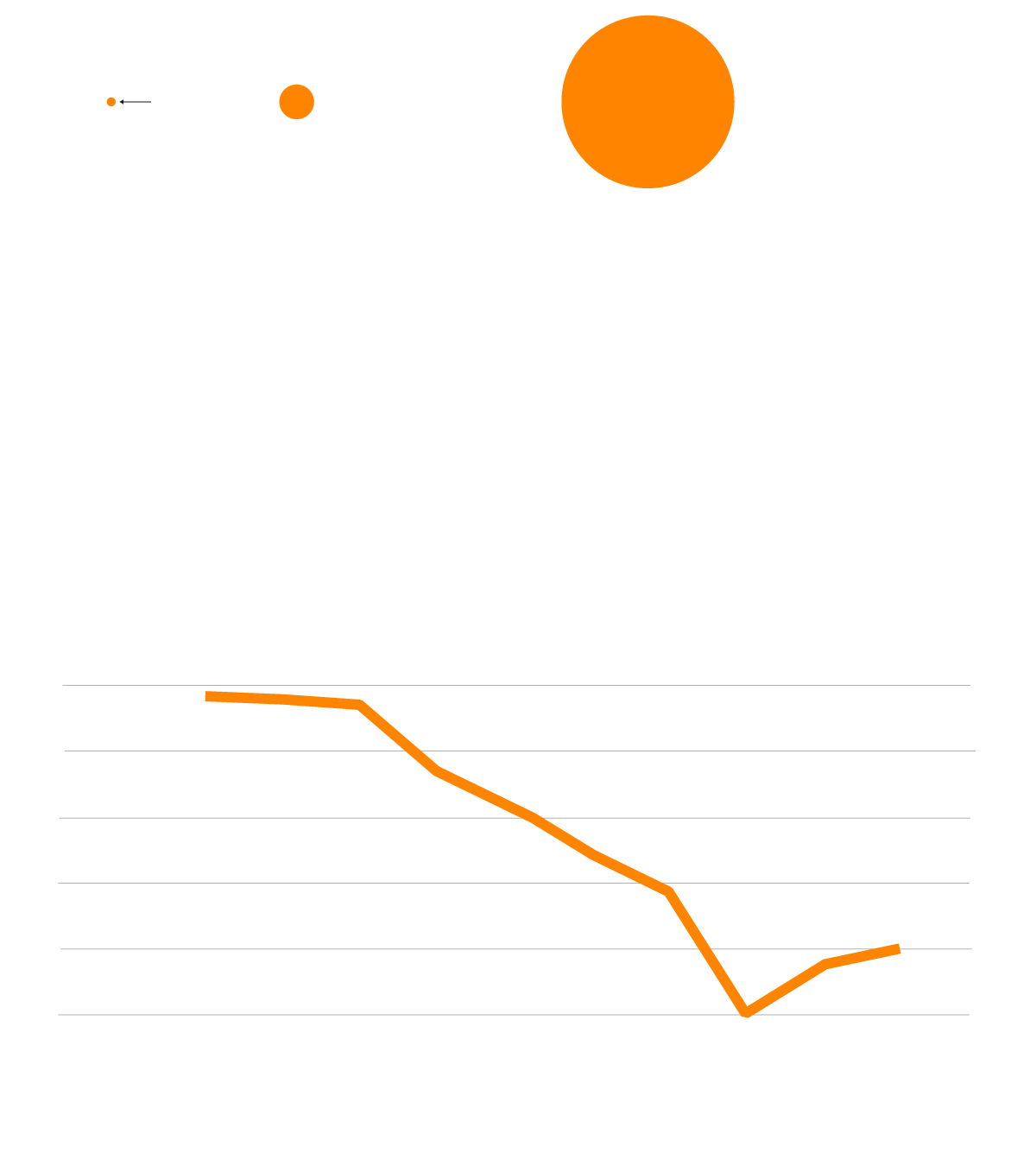
PM2.5
Pollen and mold
Width of human hair
Studies suggest long-term exposure is associated with chronic bronchitis, reduced lung function and increased death rates from lung cancer and heart disease. Communities of color and low-income populations face disproportionate exposure to PM2.5. Research has shown that tightening the PM2.5 standard would save 12,000 American lives each year.
This fine particulate pollution decreased under Barack Obama, but has seen a steady uptick since Trump took office.
How PM2.5 levels changed since 2016
+25% compared to 2016
+20%
+15%
+10%
PM2.5 level started
increasing after 2016
+5%
No difference from 2016
2008
2010
2016
2012
2014
2018
Guardian graphic. Source: US Environmental Protection Agency and “Recent increases in air pollution: evidence and implications for mortality,” by Karen Clay and Nicholas Z. Muller

PM2.5
Pollen and mold
Width of human hair
Studies suggest long-term exposure is associated with chronic bronchitis, reduced lung function and increased death rates from lung cancer and heart disease. Communities of color and low-income populations face disproportionate exposure to PM2.5. Research has shown that tightening the PM2.5 standard would save 12,000 American lives each year.
This fine particulate pollution decreased under Barack Obama, but has seen a steady uptick since Trump took office.
How PM2.5 levels changed since 2016
+25% compared to 2016
+20%
+15%
+10%
PM2.5 level started
increasing after 2016
+5%
No difference from 2016
2008
2010
2012
2014
2016
2018
Guardian graphic. Source: US Environmental Protection Agency and “Recent increases in air pollution: evidence and implications for mortality,” by Karen Clay and Nicholas Z. Muller
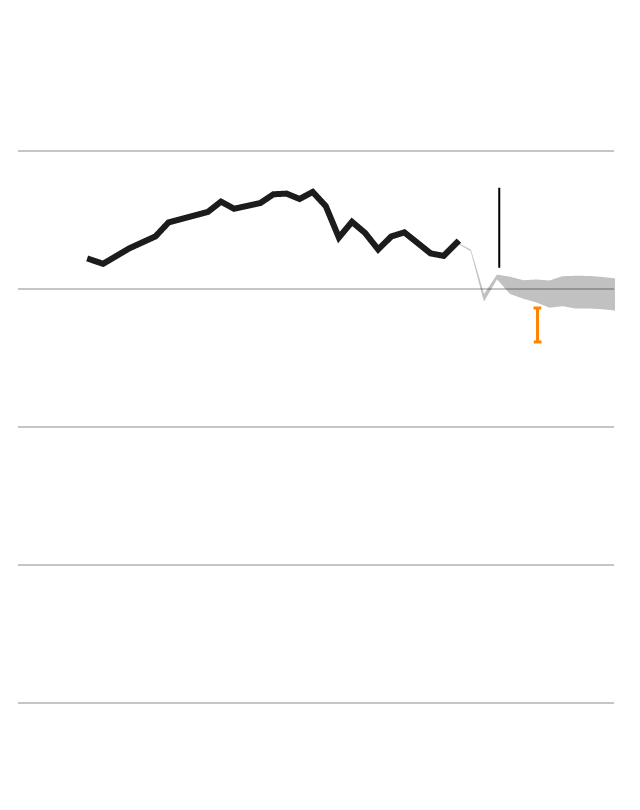
US carbon emissions v its Paris
agreement pledge
8,000 million metric tons
Projected range
6,000
The US is not on pace to meet its
pledged range for 2025.
4,000
2,000
0
2030
2020
1990
Guardian graphic. Source: Climate Action Tracker
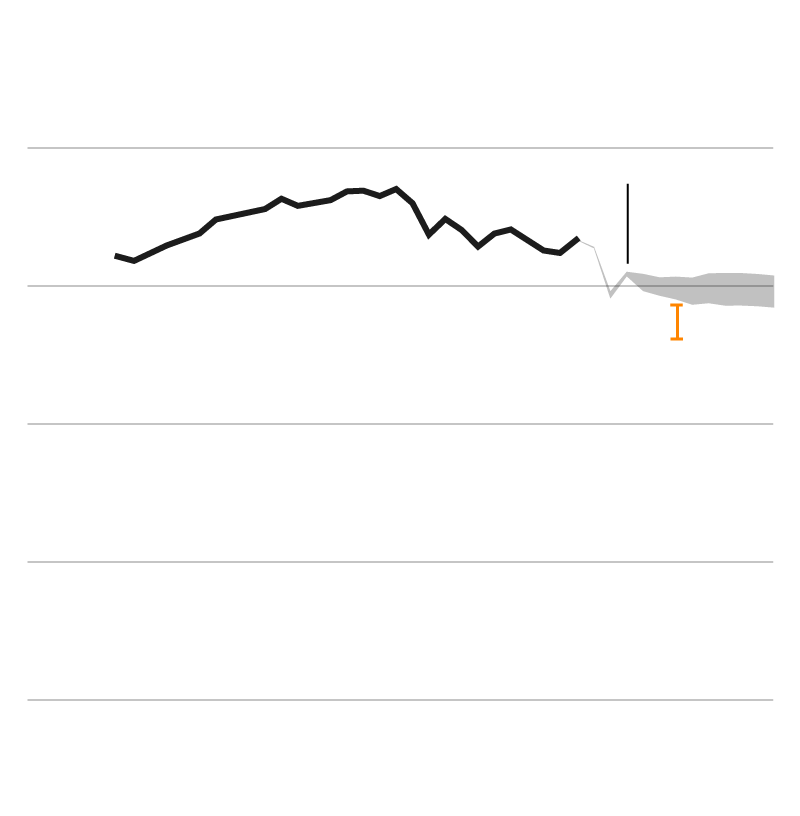
US carbon emissions v its Paris
agreement pledge
8,000 million metric tons
Projected range
6,000
The US is not on pace to meet its
pledged range for 2025.
4,000
2,000
0
2030
2020
1990
Guardian graphic. Source: Climate Action Tracker
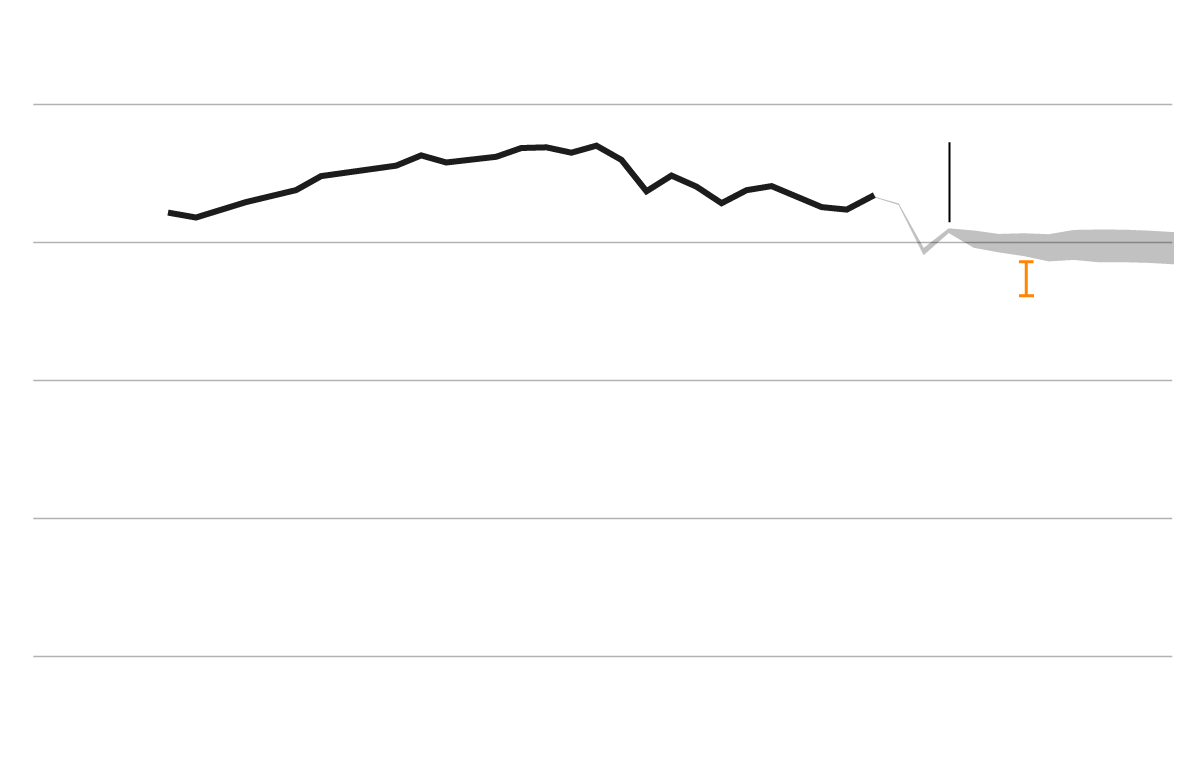
US carbon emissions v its Paris agreement pledge
8,000 million metric tons
Projected range
6,000
The US is not on pace to meet its
pledged range for 2025.
4,000
2,000
0
2030
2020
1990
Guardian graphic. Source: Climate Action Tracker
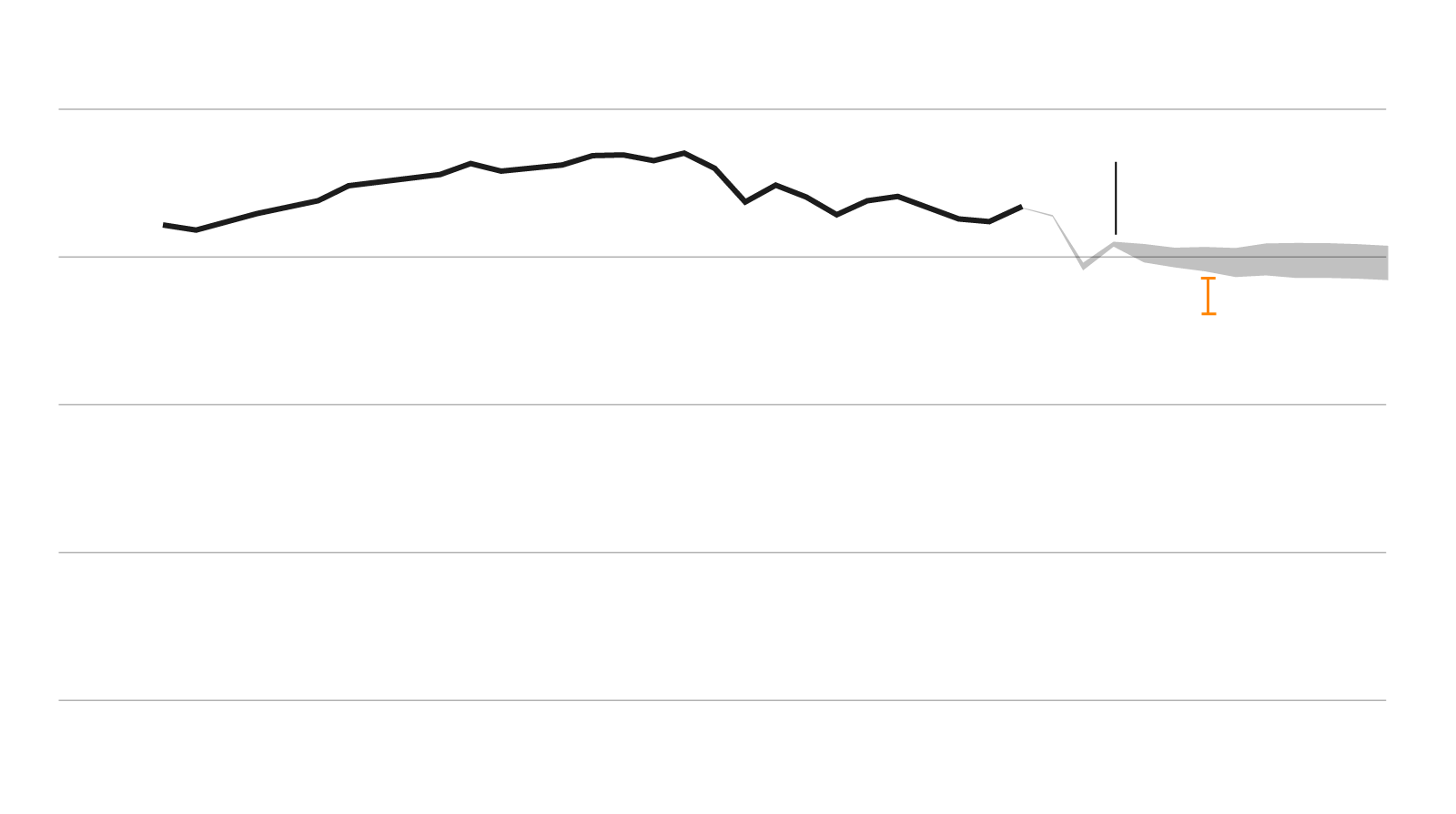
US carbon emissions v its Paris agreement pledge
8,000 million metric tons
Projection range
6,000
The US is not on pace to meet its
pledged range for 2025.
4,000
2,000
0
2030
2020
1990
Guardian graphic. Source: Climate Action Tracker
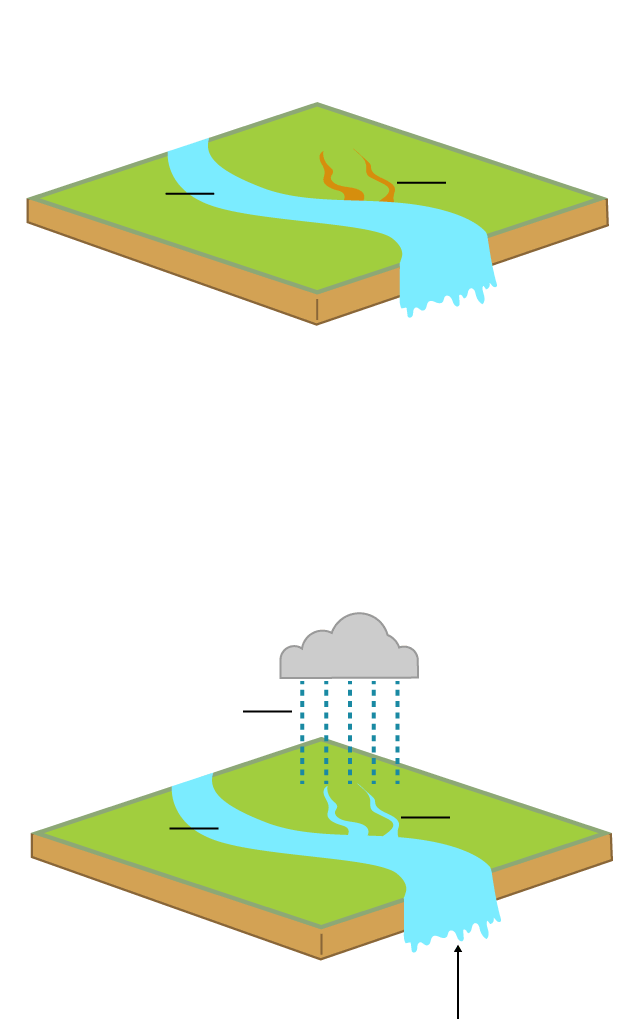
Some streams are dry ...
Dry stream
River
... until it rains. These are called ephemeral streams. They account for about 18% of streams and river miles.
Rain
Streams
River
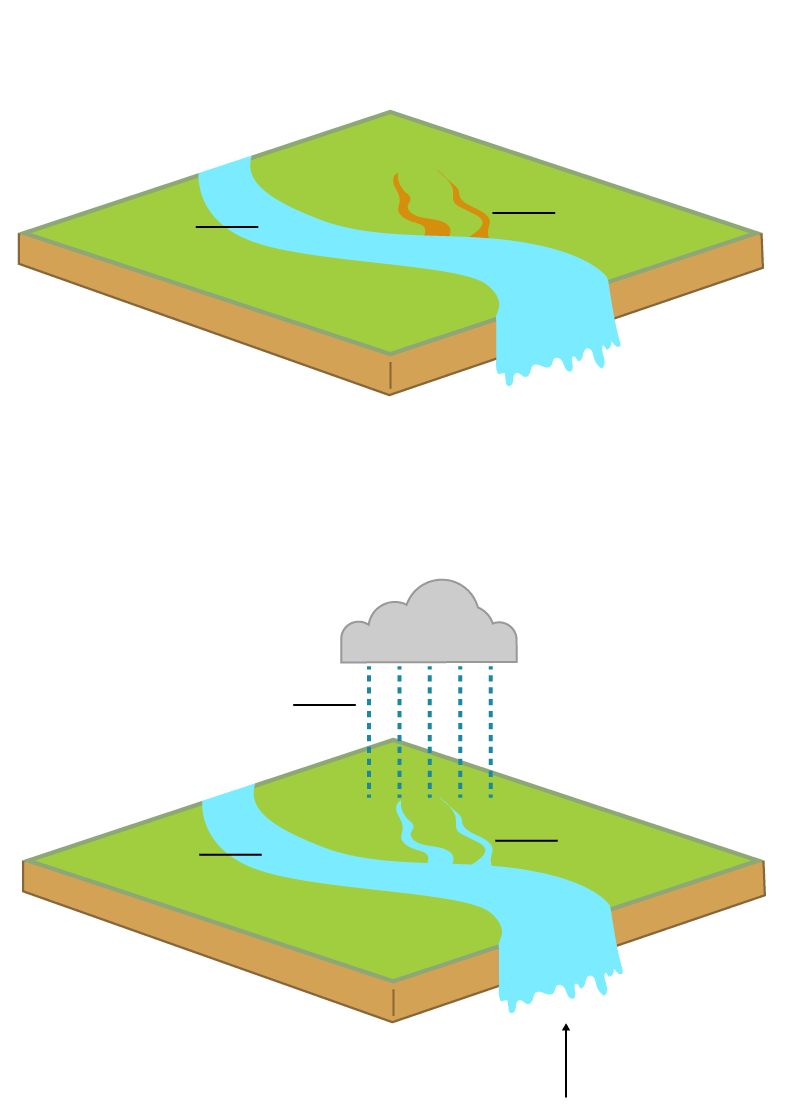
Some streams are dry ...
Dry streams
River
... until it rains. These are called ephemeral streams. They account for about 18% of streams and river miles.
Rain
Streams
River

Some streams are dry ...
Dry streams
River
... until it rains. These are called ephemeral streams. They account for about 18% of streams and river miles.
Rain
Streams
River

Some streams are dry ...
Dry streams
River
... until it rains. These are called ephemeral streams. They account for about 18% of streams and river miles.
Rain
Streams
River
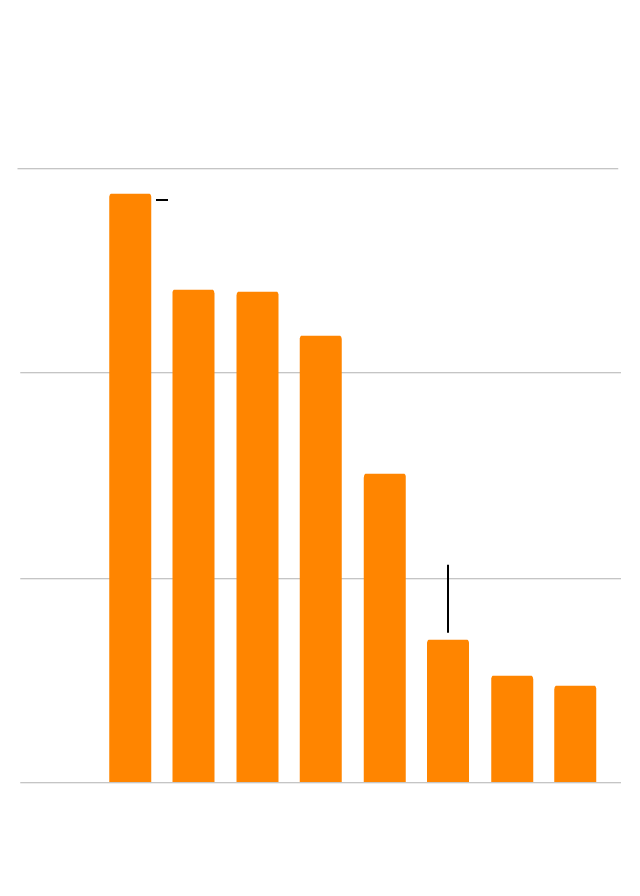
Mercury pollution at power
plants
60,000 pounds of mercury
Regulations begin
40,000
Regulations fully
implemented
20,000
0
‘11
‘12
‘13
‘14
‘15
‘16
‘17
‘18
Guardian graphic. Source: Environmental Protection Agency
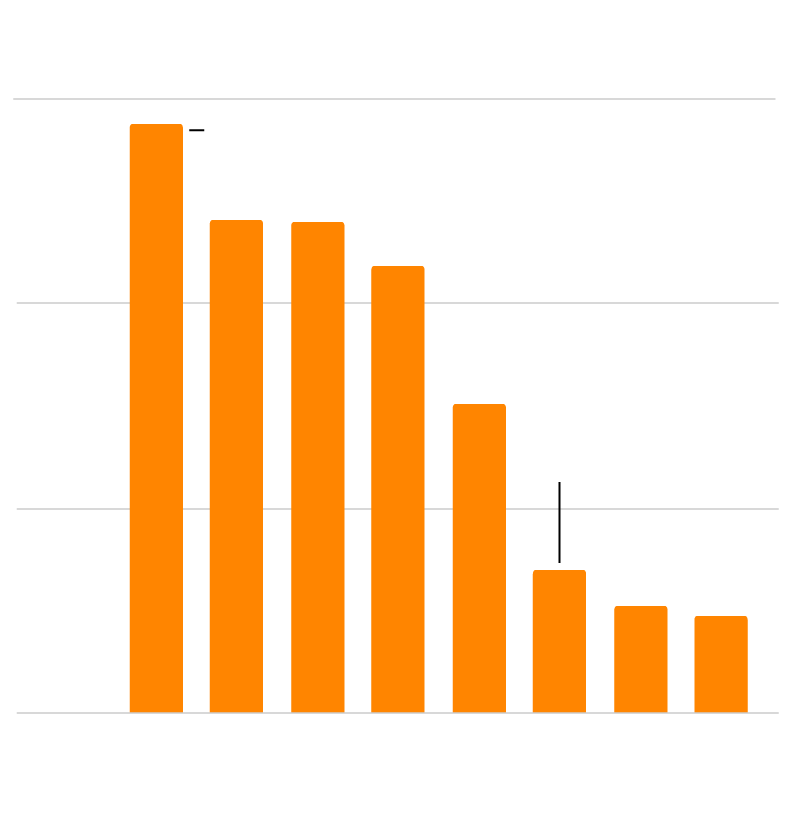
Mercury pollution at power plants
60,000 pounds of mercury
Regulations begin
40,000
Regulations fully
implemented
20,000
0
‘11
‘12
‘13
‘14
‘15
‘16
‘17
‘18
Guardian graphic. Source: Environmental Protection Agency
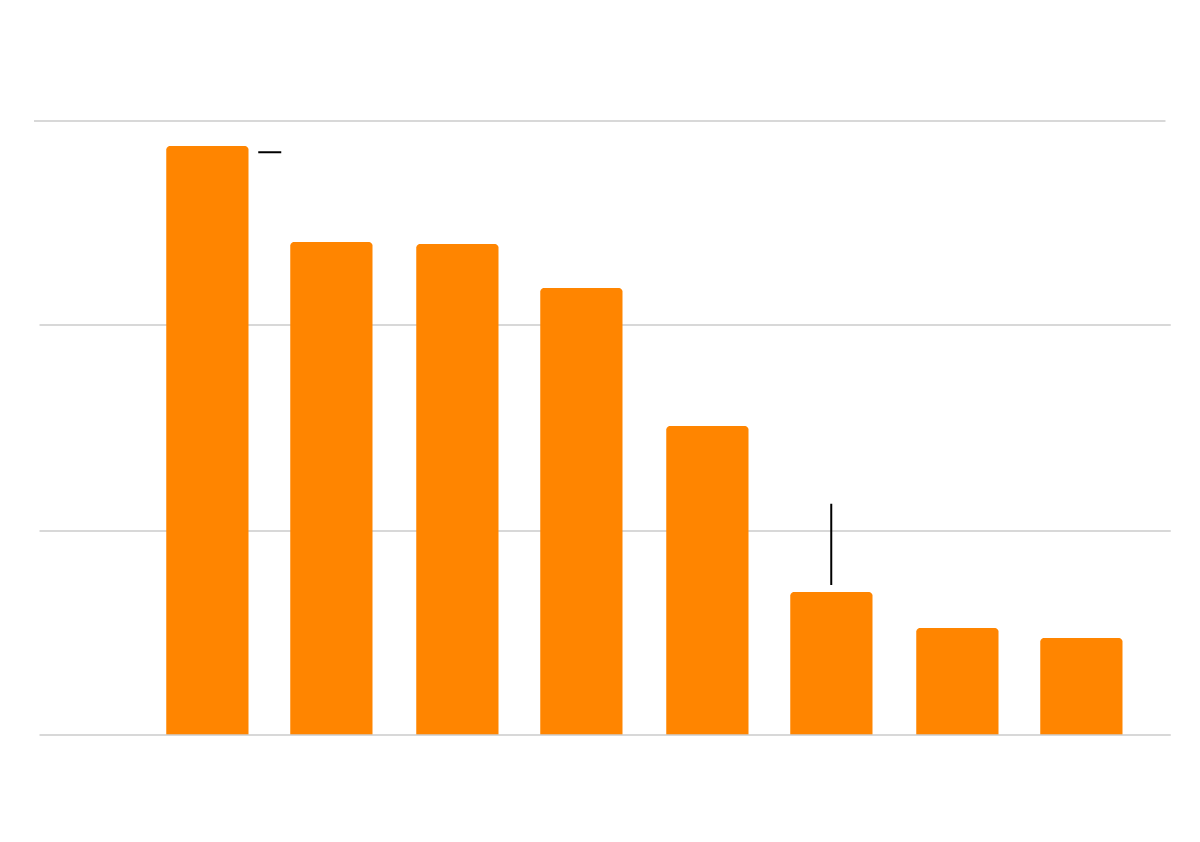
Mercury pollution at power plants
60,000 pounds of mercury
Regulations begin
40,000
Regulations fully
implemented
20,000
0
2011
2012
2013
2014
2015
2016
2017
2018
Guardian graphic. Source: Environmental Protection Agency
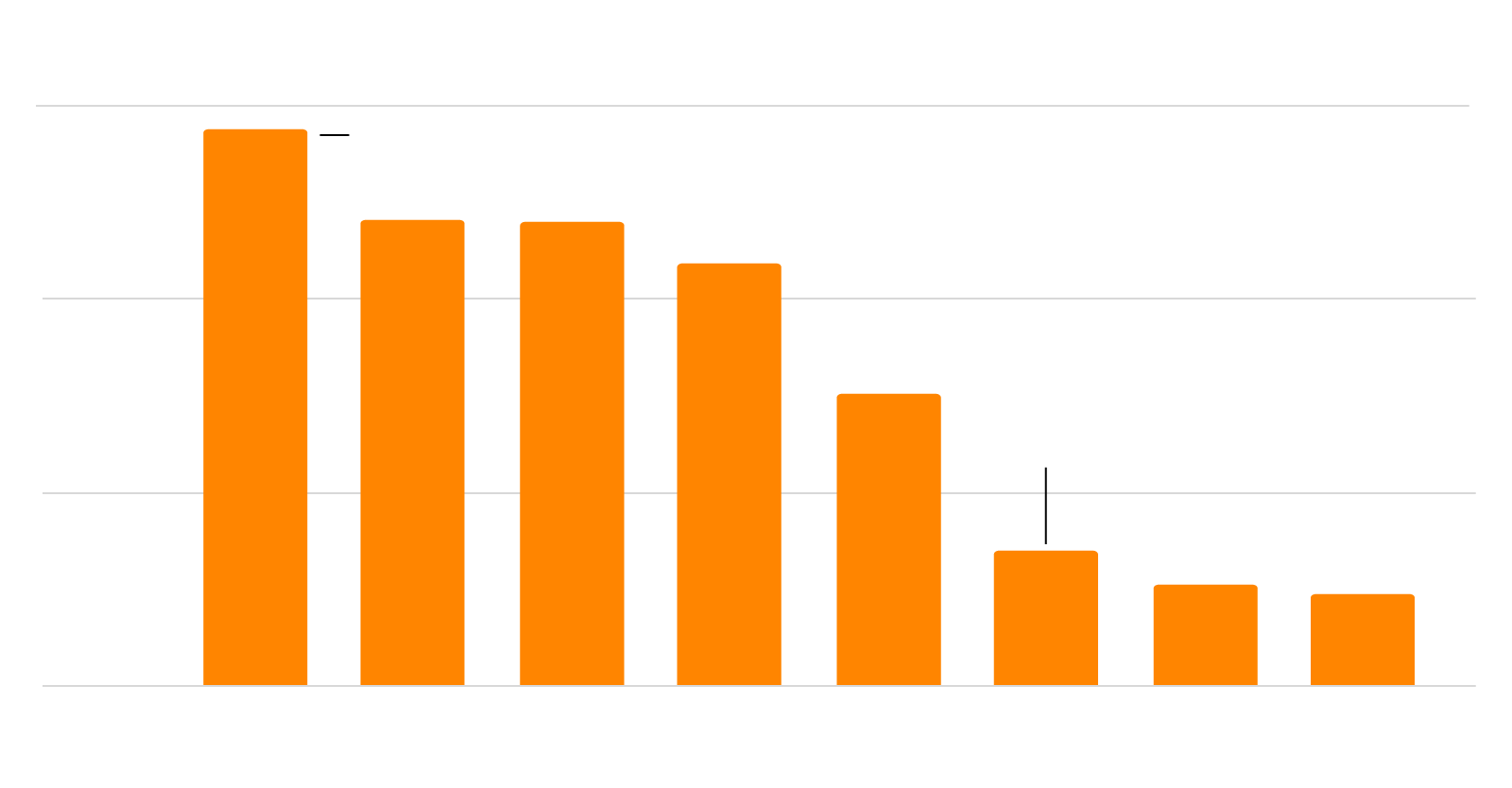
Mercury pollution at power plants
60,000 pounds of mercury
Regulations begin
40,000
Regulations fully
implemented
20,000
0
2011
2012
2013
2014
2015
2016
2017
2018
Guardian graphic. Source: Environmental Protection Agency
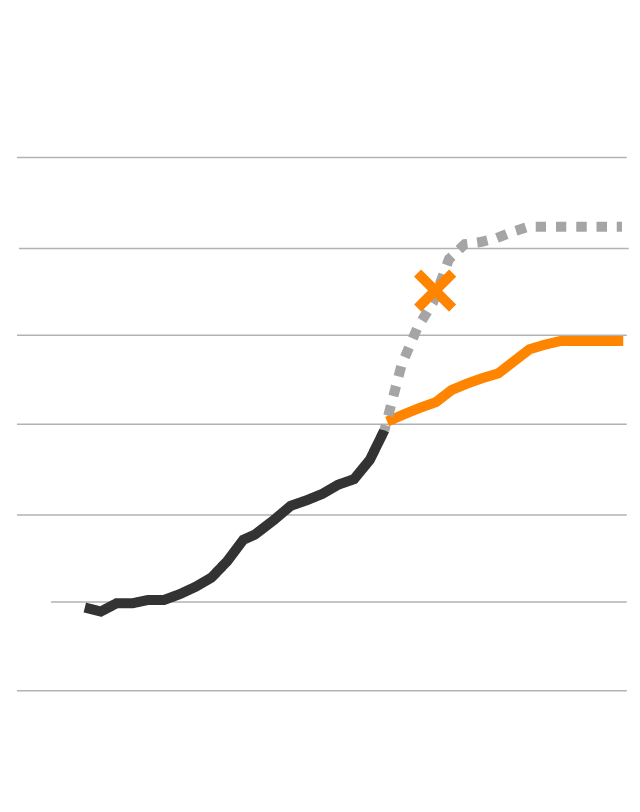
Trump’s new fuel economy
standards
50 miles per gallon average
Obama standards
45
40
35
Trump standards
Historical standards
30
25
20
2035
2019
2000
Guardian graphic. Source: Carbon Brief
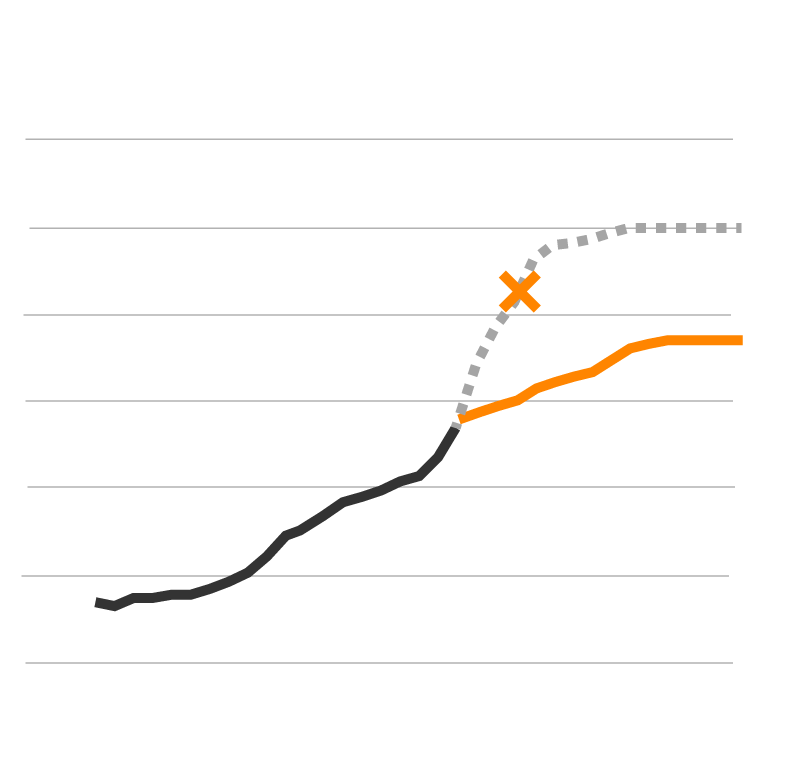
Trump’s new fuel economy
standards
50 miles per gallon average
Obama standards
45
40
35
Trump standards
30
25
Historical standards
20
2000
2019
2035
Guardian graphic. Source: Carbon Brief
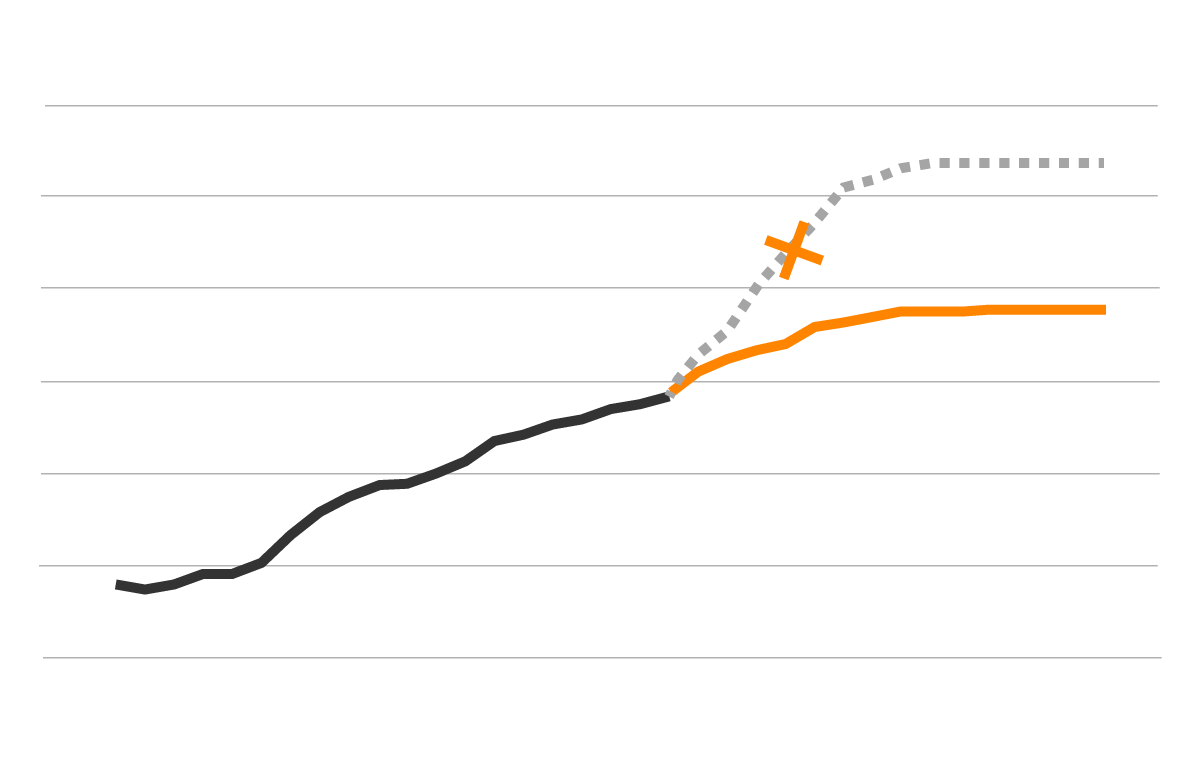
Trump’s new fuel economy standards
50 miles per gallon average
Obama standards
45
40
Trump standards
35
30
25
Historical standards
20
2000
2019
2035
Guardian graphic. Source: Carbon Brief

Trump’s new fuel economy standards
50 miles per gallon average
Obama standards
45
40
Trump standards
35
30
25
Historical standards
20
2000
2035
2019
Guardian graphic. Source: Carbon Brief
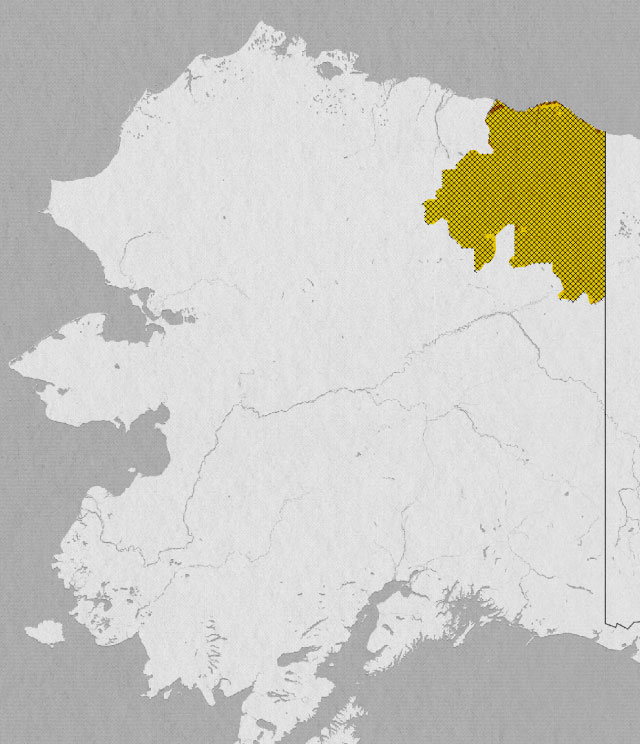
Arctic national
wildlife refuge
Alaska
Guardian graphic. Source: US Fish and Wildlife Service
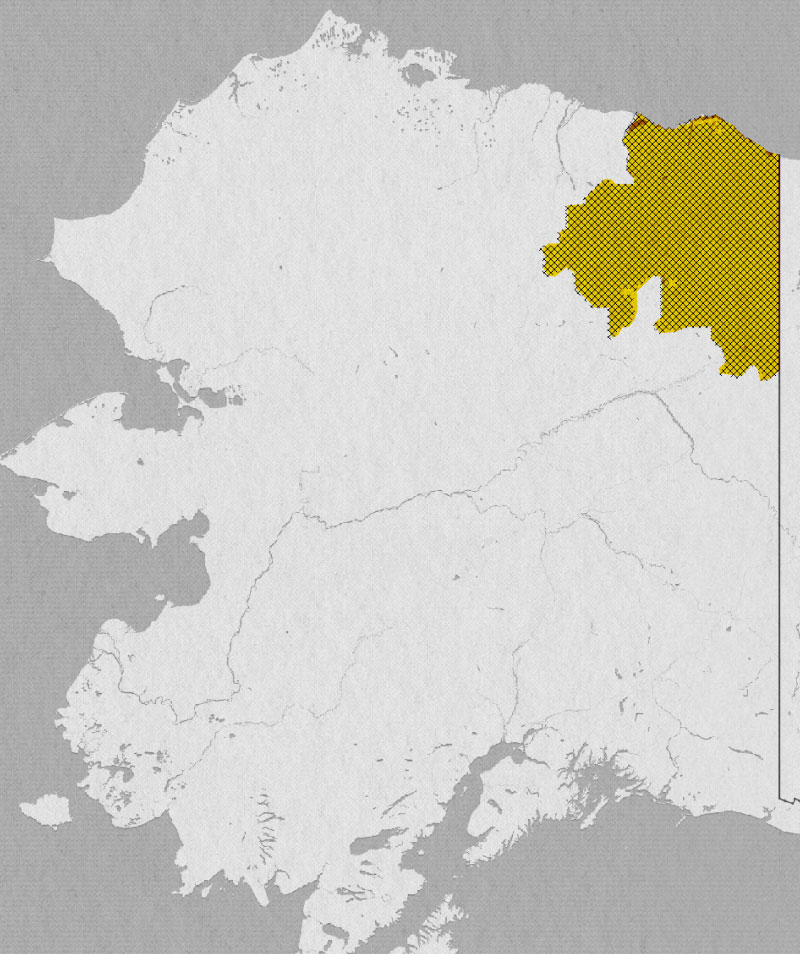
Arctic national
wildlife refuge
Alaska
Guardian graphic. Source: US Fish and Wildlife Service

Arctic national
wildlife refuge
Alaska
Guardian graphic. Source: US Fish and Wildlife Service
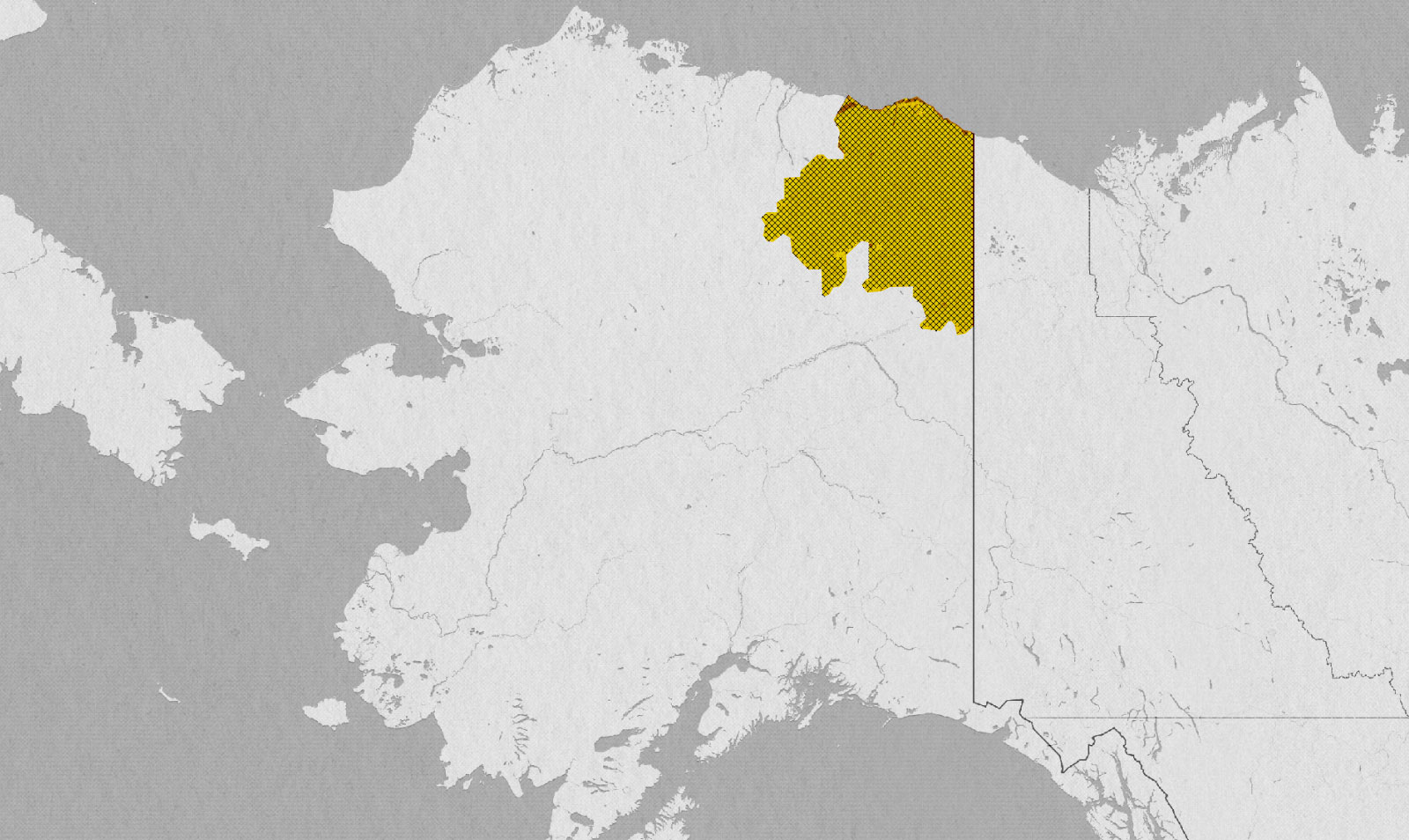
Arctic national wildlife refuge
Alaska
Guardian graphic. Source: US Fish and Wildlife Service
Even though the supreme court halted the rule in 2016, and states were never required to comply, carbon dioxide emissions from the US power sector have still fallen more than the rule’s goal – by at least one-third. Cheaper natural gas and renewable power, as well as local policies to move away from fossil fuels, sped the shift.
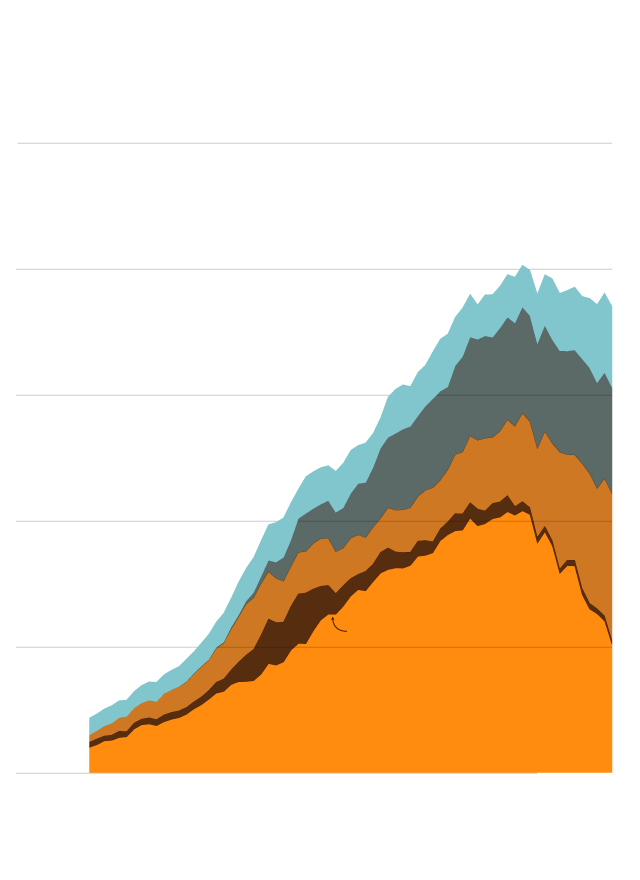
US electricity sector has moved
away from fossil fuels
50,000 trillion BTUs
40,000
All Renewable
30,000
Nuclear
Natural gas
20,000
10,000
Other
Coal
0
2000
1950
1960
1970
1980
1990
2010
2019
Guardian graphic. Source: US Energy Information Administration
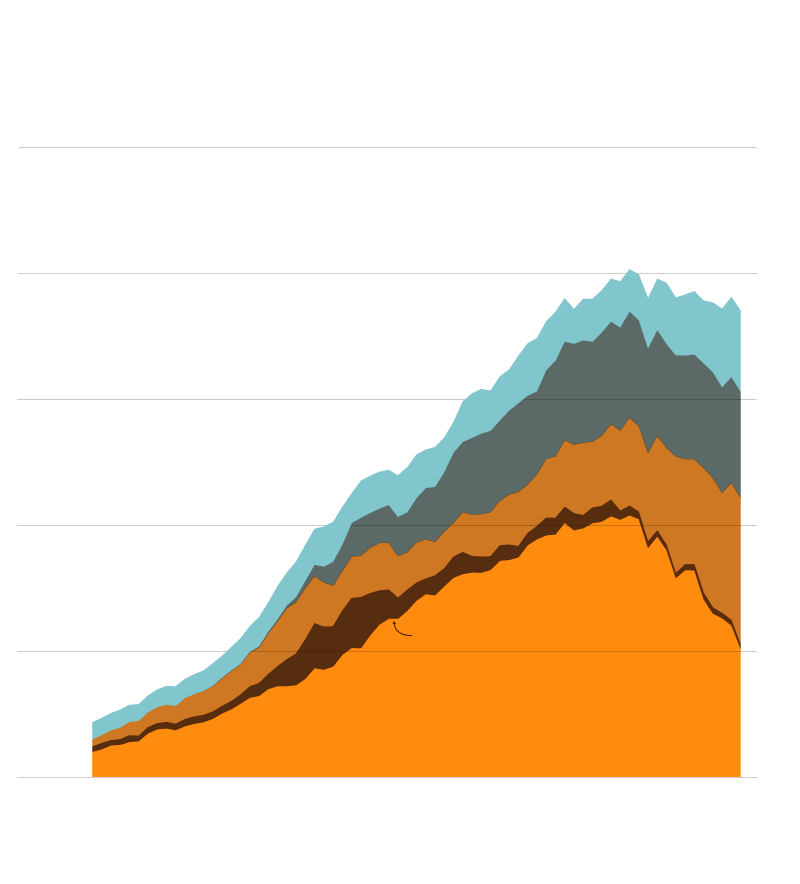
US electricity sector has moved away from fossil fuels
50,000 trillion BTUs
40,000
All Renewable
30,000
Nuclear
Natural gas
20,000
10,000
Other
Coal
0
2000
1950
1960
1970
1980
1990
2010
2019
Guardian graphic. Source: US Energy Information Administration

US electricity sector has moved away from fossil fuels
50,000 trillion BTUs
40,000
All Renewable
30,000
Nuclear
Natural gas
20,000
10,000
Other
Coal
0
2000
1950
1960
1970
1980
1990
2010
2019
Guardian graphic. Source: US Energy Information Administration
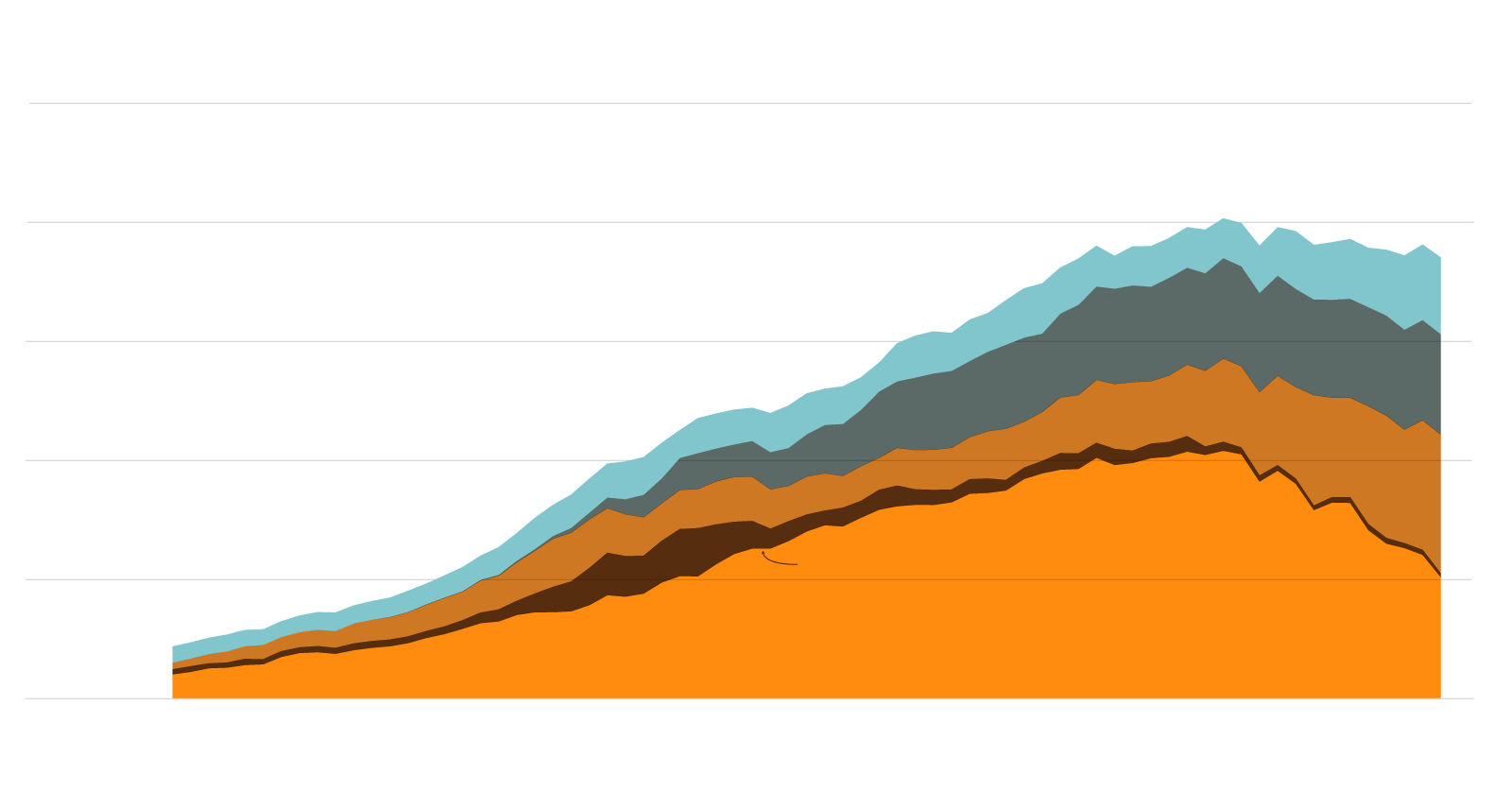
US electricity sector has moved away from fossil fuels
50,000 trillion BTUs
40,000
All Renewable
30,000
Nuclear
Natural gas
20,000
10,000
Other
Coal
0
2000
1950
1960
1970
1980
1990
2010
2019
Guardian graphic. Source: US Energy Information Administration

Methane is the second-most emitted
greenhouse gas.
Fluorinated gases (3%)
Nitrous oxide (7%)
Carbon dioxide (81%)
Methane (10%)
Carbon dioxide has a
global warming potential of one.
Heat
Methane trap 28 times more heat
in a shorter amount of time.
Guardian graphic. Source: Environmental Protection Agency 2018 report; and the IPCC Fifth Assessment Report, 2014

Methane is the second-most emitted greenhouse gas.
Fluorinated gases (3%)
Nitrous oxide (7%)
Carbon dioxide (81%)
Methane (10%)
Carbon dioxide has a
global warming potential of one.
Heat
Methane trap 28 times more heat
in a shorter amount of time.
Guardian graphic. Source: US Environmental Protection Agency and the IPCC Fifth Assessment Report, 2014

Methane is the second-most emitted greenhouse gas.
Nitrous oxide (7%)
Methane (10%)
Carbon dioxide (81%)
Fluorinated gases (3%)
Carbon dioxide has a
global warming potential of one.
Heat
Methane trap 28 times more heat
in a shorter amount of time.
Guardian graphic. Source: US Environmental Protection Agency and the IPCC Fifth Assessment Report, 2014

Methane is the second-most emitted greenhouse gas.
Fluorinated gases (3%)
Nitrous oxide (7%)
Methane (10%)
Carbon dioxide (81%)
Carbon dioxide has a
global warming potential of one.
Heat
Methane trap 28 times more heat
in a shorter amount of time.
Guardian graphic. Source: US Environmental Protection Agency and the IPCC Fifth Assessment Report, 2014

HFCs replaced CFCs, which deplete the ozone layer
HCFCs also deplete the ozone layer and many are
greenhouse gases.
1,200 thousand metric tons consumed per year
CFCs
1,000
800
600
400
HCFCs
HFCs
200
0
1950
1960
1970
1980
1990
2000
2010
Carbon dioxide has a global warming potential of one.
Heat
HFC 134a, a common HFC, traps 1,300 times more heat.
Guardian graphic. Source: The UNEP report “HFCs: A Critical Link in Protecting Climate and the Ozone Layer” and the IPCC Fifth
Assessment Report

HFCs replaced CFCs, which deplete the ozone layer
HCFCs also deplete the ozone layer and many are greenhouse gases.
1,200 thousand metric tons consumed per year
1,000
CFCs
800
600
400
HCFCs
HFCs
200
0
1950
1960
1970
1980
1990
2000
2010
Carbon dioxide has a global warming potential of one.
Heat
HFC 134a, a common HFC, traps 1,300 times more heat.
Guardian graphic. Source: The UNEP report “HFCs: A Critical Link in Protecting Climate and the Ozone Layer” and the IPCC Fifth Assessment Report

HFCs replaced CFCs, which deplete the ozone layer
HCFCs also deplete the ozone layer and many are greenhouse gases.
1,200 thousand metric tons consumed per year
1,000
CFCs
800
600
400
HCFCs
HFCs
200
0
1950
1960
1970
1980
1990
2000
2010
Carbon dioxide has a global warming potential of one.
HFC 134a, a common HFC, traps 1,300 times more heat.
Heat
Guardian graphic. Source: The UNEP report “HFCs: A Critical Link in Protecting Climate and the Ozone Layer” and the IPCC Fifth
Assessment Report

HFCs replaced CFCs, which deplete the ozone layer
HCFCs also deplete the ozone layer and many are greenhouse gases.
1,200 thousand metric tons consumed per year
CFCs
1,000
800
600
400
HCFCs
HFCs
200
0
1950
1960
1970
1980
1990
2000
2010
HFC 134a, a common HFC, traps 1,300
times more heat.
Carbon dioxide has a global warming potential of one.
Heat
Guardian graphic. Source: The UNEP report “HFCs: A Critical Link in Protecting Climate and the Ozone Layer” and the IPCC Fifth Assessment Report

It starts with a notice of intent which informs the public that they’re about to start an analysis.
Remember this fish
After an average of 2.7 years ...
Draft of analysis is published so the government can get further feedback from the public.
After an average of 1.4 years ...
A final statement is published after
feedback on the draft.
The final step is a record of
decision, which explains
the final decisions and how they’ll monitor the project.
Guardian graphic. Source: US Department of Energy

It starts with a notice of intent which
informs the public that they’re about to start an analysis.
Remember this fish
After an average of 2.7 years ...
Draft of analysis is published so the
government can get further feedback from the public.
After an average of 1.4 years ...
A final statement is published after feedback on the draft.
The final step is a record of decision, which explains the final decisions and how they’ll monitor the project.
Guardian graphic. Source: US Department of Energy
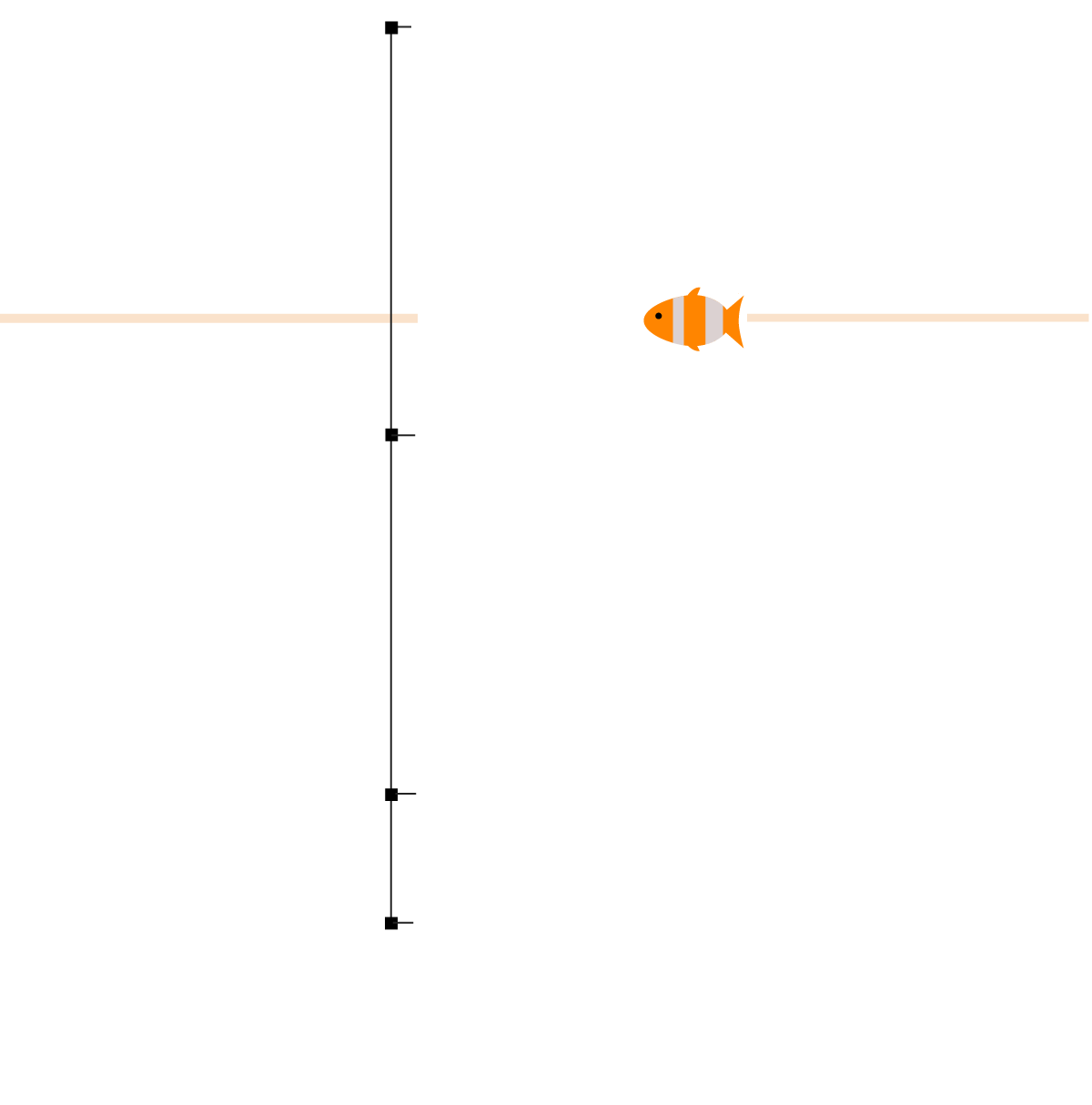
It starts with a notice of intent which
informs the public that they’re about to start an analysis.
After an average of 2.7 years ...
Remember this fish
Draft of analysis is published so the
government can get further feedback from the public.
After an average of 1.4 years ...
A final statement is published after feedback on the draft.
The final step is a record of decision, which explains the final decisions and how they’ll monitor the project.
Guardian graphic. Source: US Department of Energy
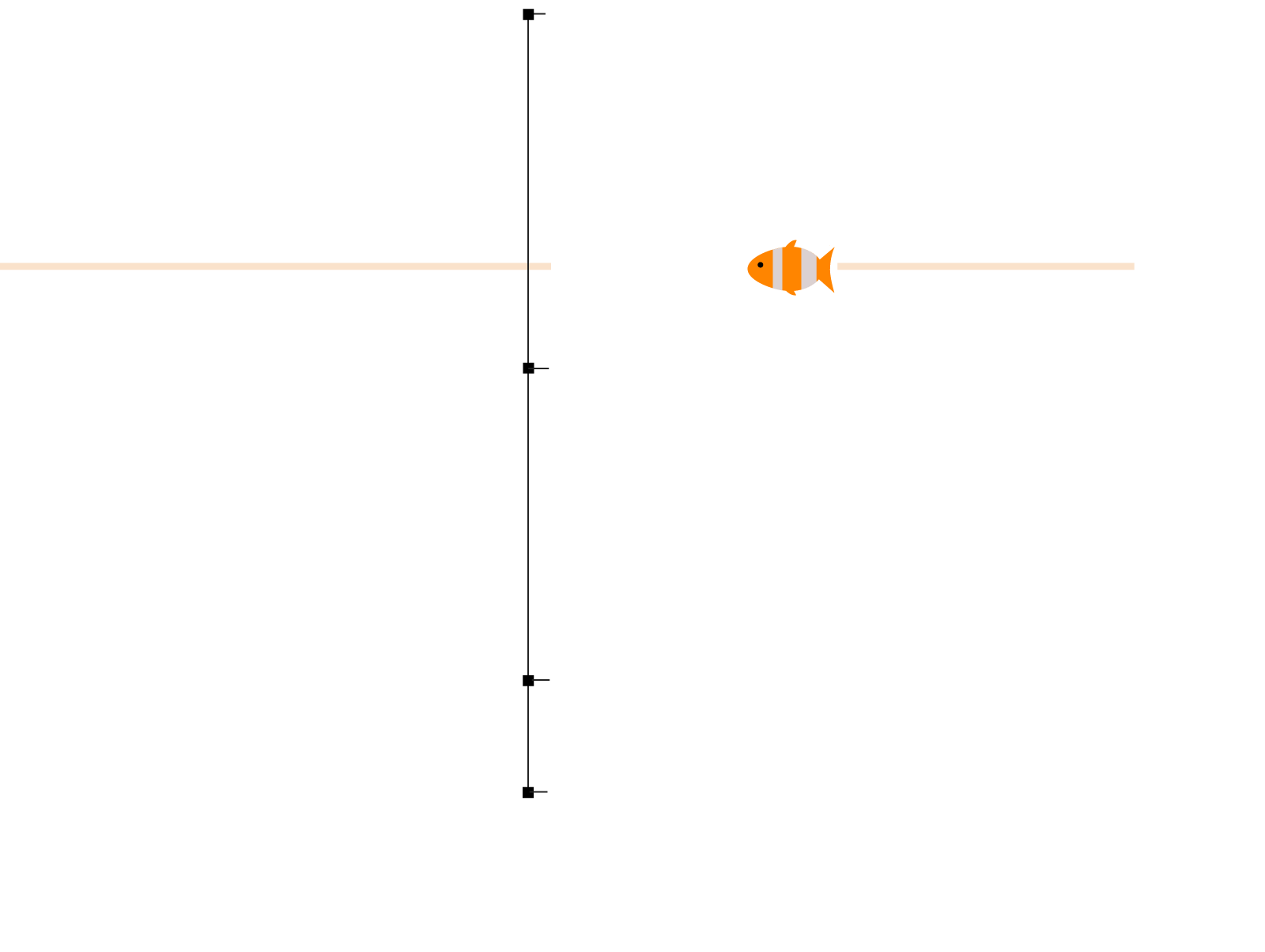
It starts with a notice of intent which
informs the public that they’re about to start an analysis.
After an average of 2.7 years ...
Remember this fish
Draft of analysis is published so the
government can get further feedback from the public.
After an average of 1.4 years ...
A final statement is published after feedback on the draft.
The final step is a record of decision, which explains the final decisions and how they’ll monitor the project.
Guardian graphic. Source: US Department of Energy
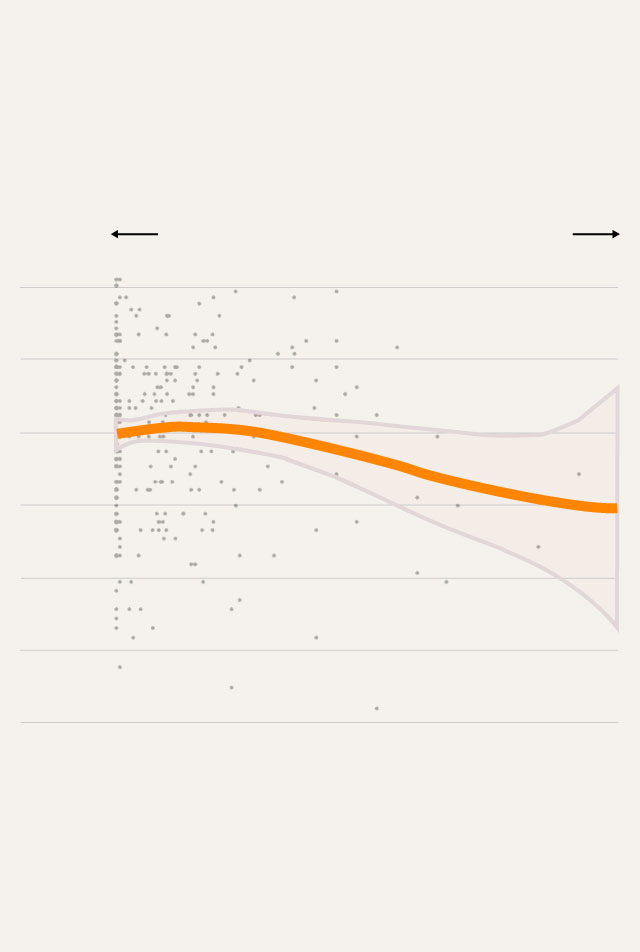
Prenatal exposure to the
pesticide correlates with lower childhood IQ
A sample of 265 children at age 7
Less exposure
More exposure
4.8 IQ score on a log scale
4.7
4.6
4.5
4.4
4.3
4.2
10
15
20
5
0
Picograms of chlorpyrifos per gram of
parent’s umbilical cord plasma
Guardian graphic. Source: “Seven-Year Neurodevelopmental Scores and Prenatal Exposure to Chlorpyrifos, a Common Agricultural
Pesticide” (2011)

Prenatal exposure to the pesticide
correlates with lower childhood IQ
A sample of 265 children at age 7
Less exposure
More exposure
4.8 IQ score on a log scale
4.7
4.6
4.5
4.4
4.3
4.2
10
15
20
5
0
Picograms of chlorpyrifos per gram of
parent’s umbilical cord plasma
Guardian graphic. Source: “Seven-Year Neurodevelopmental Scores and Prenatal Exposure to Chlorpyrifos, a Common Agricultural Pesticide” (2011)
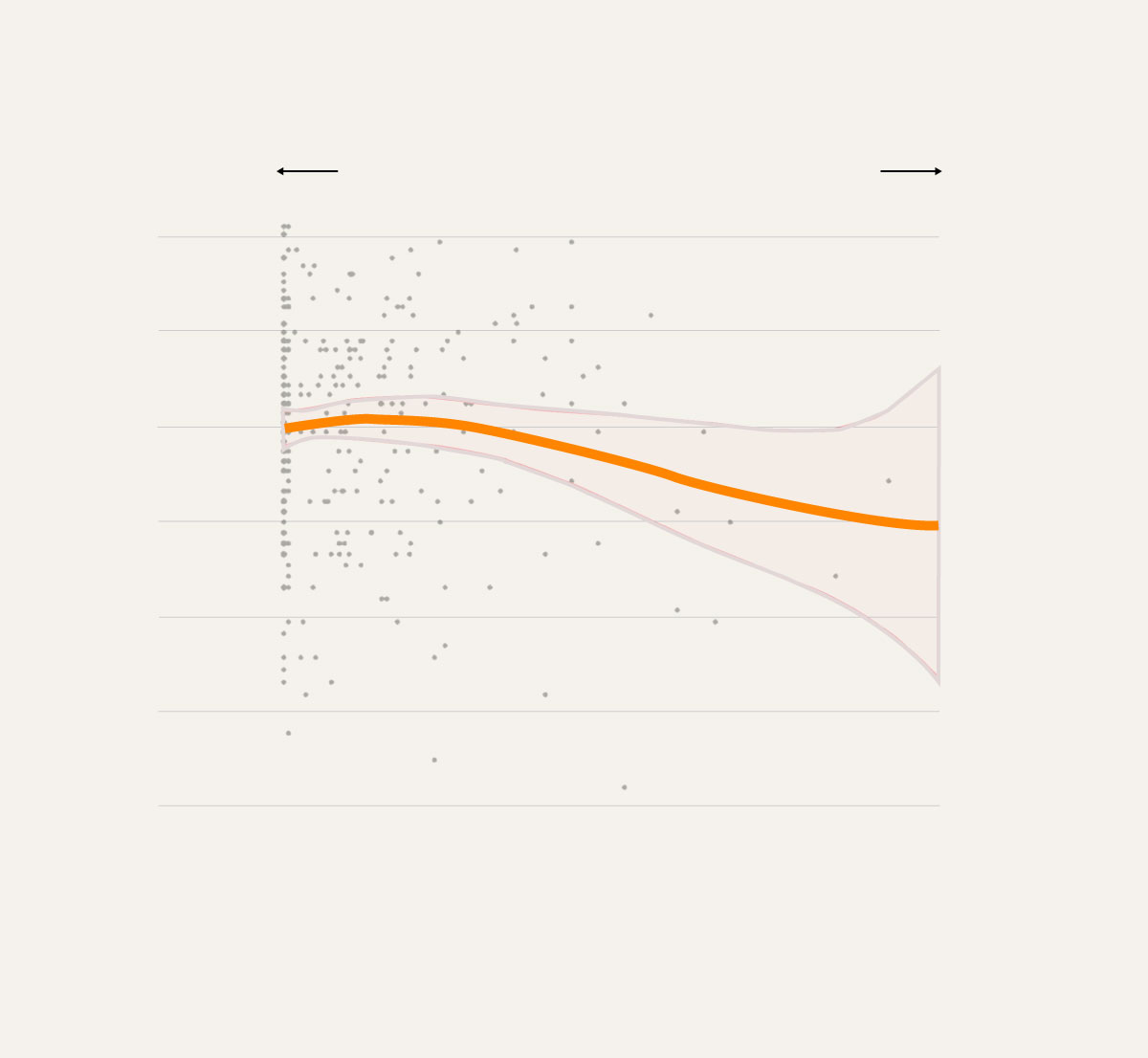
Prenatal exposure to the pesticide correlates with lower childhood IQ
A sample of 265 children at age 7
Less exposure
More exposure
4.8 IQ score on a log scale
4.7
4.6
4.5
4.4
4.3
4.2
10
15
20
5
0
Picograms of chlorpyrifos per gram of
parent’s umbilical cord plasma
Guardian graphic. Source: “Seven-Year Neurodevelopmental Scores and Prenatal Exposure to Chlorpyrifos, a Common Agricultural Pesticide” (2011)
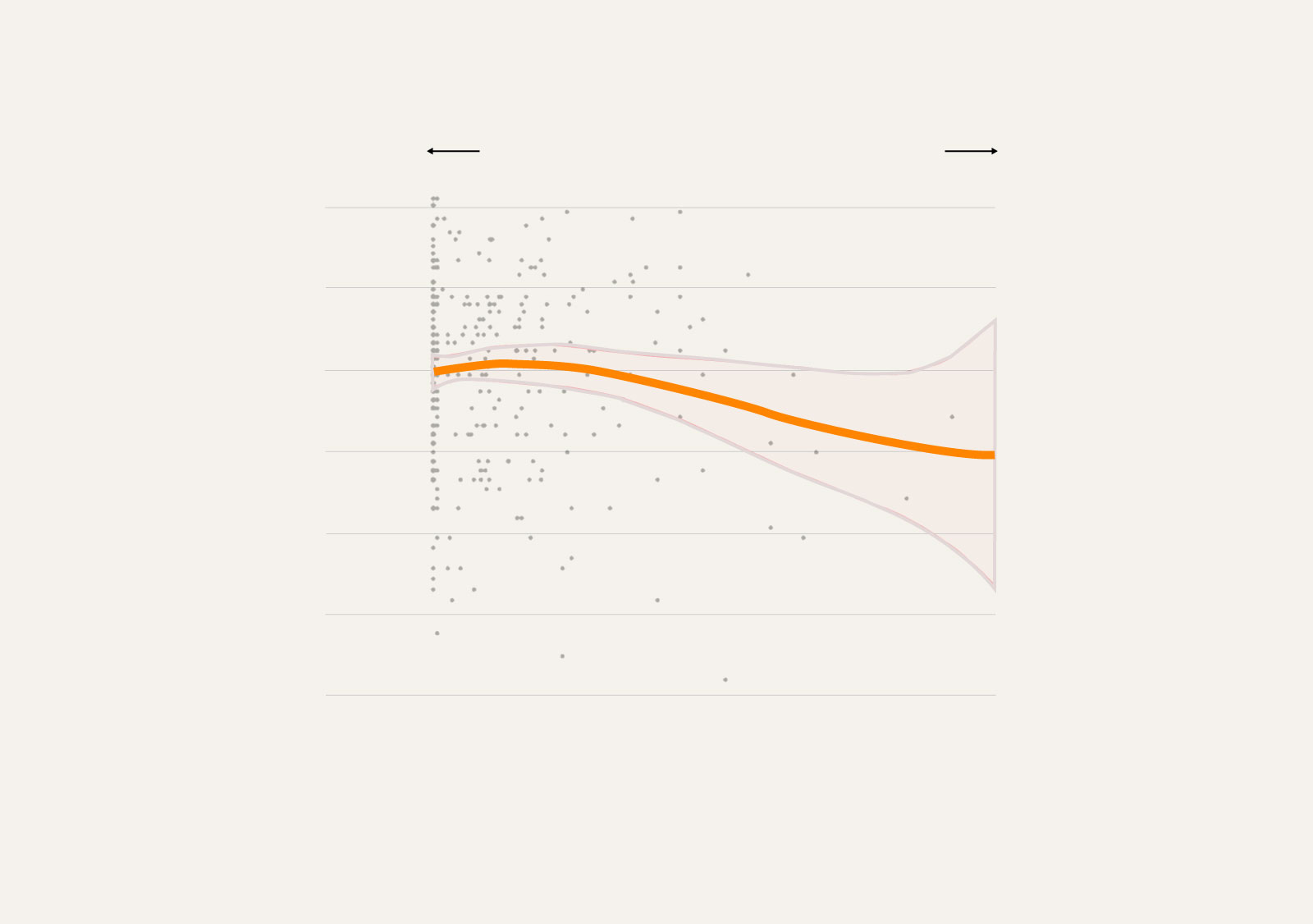
Prenatal exposure to the pesticide correlates with lower childhood IQ
A sample of 265 children at age 7
Less exposure
More exposure
4.8 IQ score on a log scale
4.7
4.6
4.5
4.4
4.3
4.2
10
15
20
5
0
Picograms of chlorpyrifos per gram of
parent’s umbilical cord plasma
Guardian graphic. Source: “Seven-Year Neurodevelopmental Scores and Prenatal Exposure to Chlorpyrifos, a Common Agricultural Pesticide” (2011)

